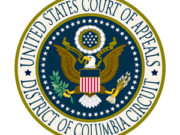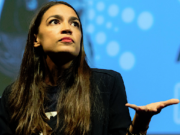A trio of news stories from the past few weeks illustrates how too much disclosure information can mislead the voters it is supposed to inform and dirty up a political process it is intended to clean.
First came the story that George Soros was funding a super PAC backing John Kasich. One of the most prominent donors to left-wing causes supporting a candidate for the Republican nomination for President would be quite the story if it actually occurred. But it did not. As it turned out, conservative news sites and Cruz’s supporters were fooled by misleading data from the Center for Responsive Politics (CRP). “The alleged ‘millionaires’ bankrolling the governor are Stanley Druckenmiller, who helped manage Mr. Soros’s Quantum Fund between 1988 and 2000, and former Soros Fund Management chief investment officer Scott Bessent, who left the fund last year,” explained The Wall Street Journal.
Because CRP aggregates individual contributions based on an individual’s disclosed employer, Bessent’s $200,000 in contributions to the Kasich-supporting super PAC New Day for America was listed as $200,000 from Soros Fund Management on CRP’s OpenSecrets website. One can imagine how this would be confusing. An interesting question to consider is what story reached more people: the initial news that Soros was funding a Kasich-supporting super PAC, or the later correction that no, he isn’t? More to the point, is the disclosure of employer information really informing the public when it is used in this manner?
Next came reports of bickering between the two leading Democratic candidates for Senate in Maryland over the role of super PACs in their campaigns. The Washington Post described the dizzying exchange between current Reps. Donna Edwards and Chris Van Hollen:
“Why don’t you join me in putting your name to what you stand for?” asked Van Hollen, who like Edwards opposes the Citizens United decision.
Edwards countered that she is “proud” to have the support of a super PAC run by Emily’s List, a group committed to electing female Democrats who support abortion rights and which has committed $2.4 million to the race so far…
Van Hollen, she suggested, has less-desirable super PAC backing. The National Association of Realtors has in recent days spent nearly $1 million in support of the congressman, including $384,000 on television spots, $370,372 on mail to voters and $126,000 on online advertising.
Emily’s List does not lobby members of Congress, Edwards noted. The realtors’ group does, contributing heavily to Republican and Democratic candidates…
Van Hollen pointed out that Edwards has also taken money from the realtors’ group — $25,000 over her eight years in Congress.”
This jockeying over who is supporting who, how much, when, and why blitzes voters with so much information – and so little context – that it would take an enormous effort to get to the bottom of it all, if there’s even a bottom to get to. Knowing who spent what doesn’t tell you why they spent it, and ultimately voters and candidates are left to speculate. As Van Hollen and Edwards’ intermittent sparring over their (independent) supporters shows, these matters aren’t settled simply by talking about them. Data must be interpreted and those interpretations are fought over endlessly. Such a state of affairs should give us pause: is all this disclosure making us more informed, or is it simply greasing the wheels of confirmation bias by arming us with an ocean of data from which to pick and choose facts that justify our preconceived notions of candidates?
Also last week, it was reported that a group founded by longtime Clinton confidante David Brock had filed a trio of Federal Election Commission (FEC) complaints against the Bernie Sanders campaign and a super PAC supporting Sanders. A story in The Hill about the complaint has, to date, received over 1,250 comments and been shared on Facebook over 12,500 times. Readers who see the headline in a newspaper or on a chyron are given the impression that the Sanders campaign is playing fast and loose with the rules. In other words, setting aside the merits of the complaint, its mere existence serves a political purpose by sending the message that a candidate is behaving unethically.
Yet when you dive into the specific allegations, you find nothing of great interest, as is often the case with FEC complaints. MSNBC reports: “One complaint from the American Democracy Legal Fund alleges Sanders’ campaign accepted more money from individual donors than allowed under federal law. Another accuses the campaign of failing to include proper disclosure on a Facebook ad it ran after the New Hampshire primary. The third claims a pro-Sanders super PAC [is] improperly using Sanders’ name, and also alleges illegal coordination.”
My CCP colleague Scott Blackburn has written before about Sanders supporters who exceed contribution limits, and how these donations are virtually always a result of honest error and quickly refunded. The other complaints are slightly more serious, but only slightly. When people hear that a politician is violating campaign laws, they likely assume something far graver than getting the disclaimer wrong on a Facebook ad.
Taken together, these three stories all show how our labyrinthine campaign finance regulations can mislead voters when there is too much disclosure. If individuals weren’t forced to list their employer when giving money to candidates and political committees, some Republican voters would not have been fooled into thinking George Soros was backing John Kasich. If spending by independent groups, campaigns, and lobbying efforts were not muddled together by “transparency” advocates, politicians, and the media, Maryland voters could have had a more meaningful discussion about the issues facing their state instead of an asinine debate over whose supporters are less sympathetic. If campaign laws were not so strict and misconstrued by the media, a few confused donors sending $6,000 instead of $5,400 would not be fodder for damaging stories about candidates.
The frustrating thing is that we could fix these problems while preserving the core of campaign finance disclosure: public reporting of the names and contribution amounts of donors who give significant amounts to candidates, parties, and PACs. It may sound like a paradox, but to make disclosure more effective, we should disclose less.














